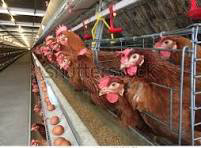Layer Management Tips for Better Egg Production
Raising healthy, productive layers requires more than just feeding them daily. Whether you're running a commercial poultry farm or keeping a backyard flock, the secret to consistent, high-quality egg production lies in how well you manage your birds. From housing to nutrition and overall care, every decision impacts the number and quality of eggs your hens lay.
Here are some practical layer management tips that can help you boost egg production — the natural and sustainable way.
1. Provide Balanced Nutrition
Hens need a well-balanced diet to lay eggs consistently. A layer feed rich in calcium, protein (16-18%), phosphorus, and essential vitamins supports healthy egg production and shell strength.
Calcium is crucial for strong eggshells. Supplement with crushed oyster shells or limestone.
Clean water is just as important. Dehydration can reduce egg laying dramatically.
Consider adding probiotics, especially during times of stress or transition.
> Pro Tip: Avoid feeding too many kitchen scraps or grains that can dilute their nutrient intake.
2. Optimize Lighting for Egg Laying
Layers need 14 to 16 hours of light daily to maintain peak production. Natural daylight may not be enough, especially during the rainy season or winter months.
Install energy-efficient LED lights in the coop.
Keep a consistent light schedule — sudden changes can cause stress and reduce laying.
3. Maintain Clean and Comfortable Housing
A clean coop equals healthy, happy hens. Layers that live in dirty, cramped, or poorly ventilated spaces are prone to disease, which can lead to a drop in egg production.
Ventilation helps reduce ammonia buildup and keeps respiratory issues at bay.
Dry bedding (such as wood shavings) prevents infections and promotes hygiene.
Nest boxes should be clean, dark, and private — one box for every 4-5 hens.
4. Control Parasites and Diseases
Parasites like mites, lice, and worms can stress your flock and negatively affect egg output.
Regularly inspect birds for external parasites.
Deworm on a routine schedule based on your vet’s advice.
Keep wild birds and rodents away from the coop — they can spread diseases.
> Natural deterrents like diatomaceous earth can help control parasites in nesting and dust bathing areas.
5. Reduce Stress Factors
Stress is one of the biggest culprits behind poor egg production. Common stressors include:
I)Overcrowding
ii)Loud noises
iii)Poor handling
iv)Inconsistent feeding times
Ensure your flock has enough space to roam and establish a routine that keeps them calm. Gentle handling and a quiet environment go a long way.
6. Cull Non-Productive Birds
Not all hens lay efficiently throughout their lifespan. Some may stop producing due to age, illness, or genetics. Periodically assess your flock's performance.
Track egg production per bird (tagging or small flock records help).
Humanely remove non-layers to make room for younger, more productive birds.
7. Introduce Pullets Properly
Adding new birds to your flock? Do it carefully.
Quarantine new pullets for 2 weeks before introducing them.
Ensure they're around 18-20 weeks old before mixing with mature layers.
Transition their feed gradually to avoid digestive problems.
Final Thoughts
Managing layers effectively isn't just about increasing egg numbers — it's about ensuring your hens are healthy, stress-free, and living in a supportive environment. Implementing these layer management tips can result in better egg production, stronger shells, and happier birds all year round.
If you're serious about poultry farming, consistency is your best friend. Stick to a routine, stay observant, and always be willing to learn from your flock. Happy hens, after all, are productive hens.

